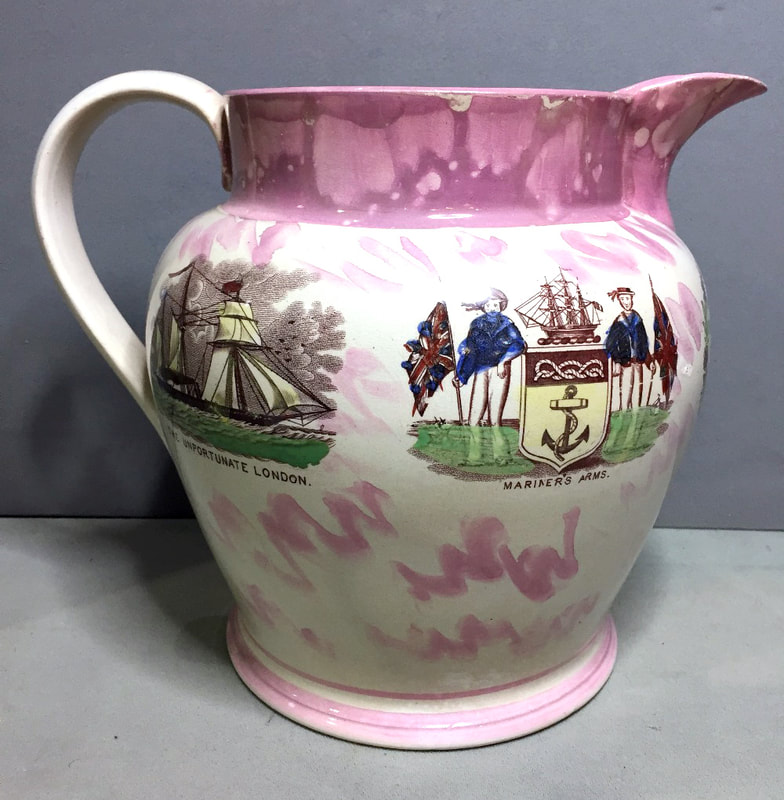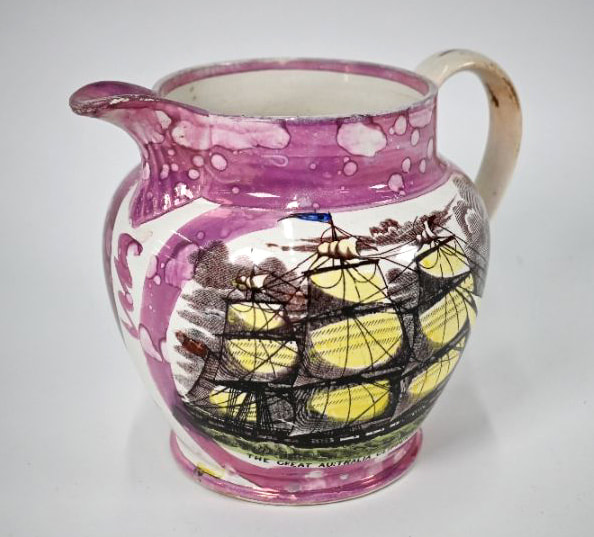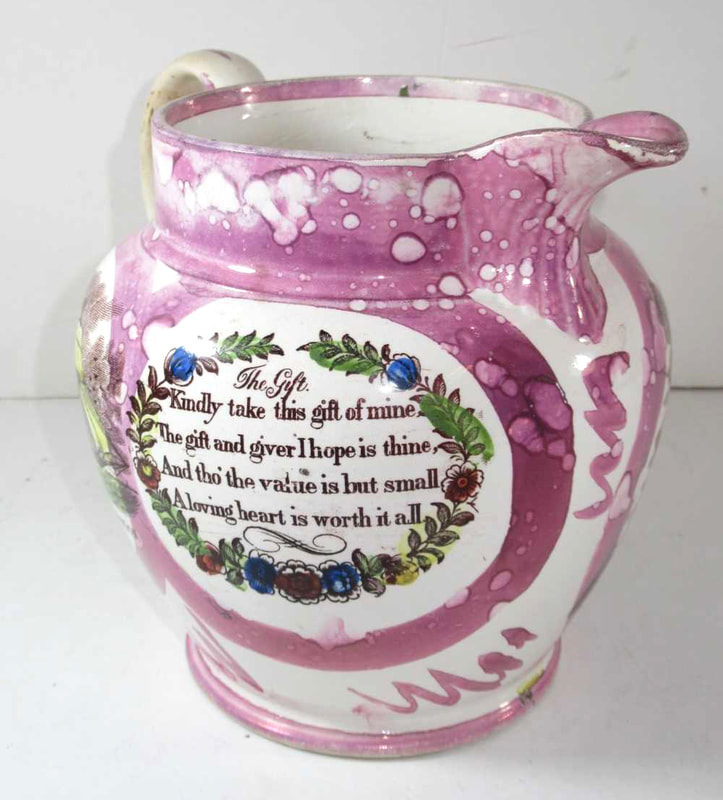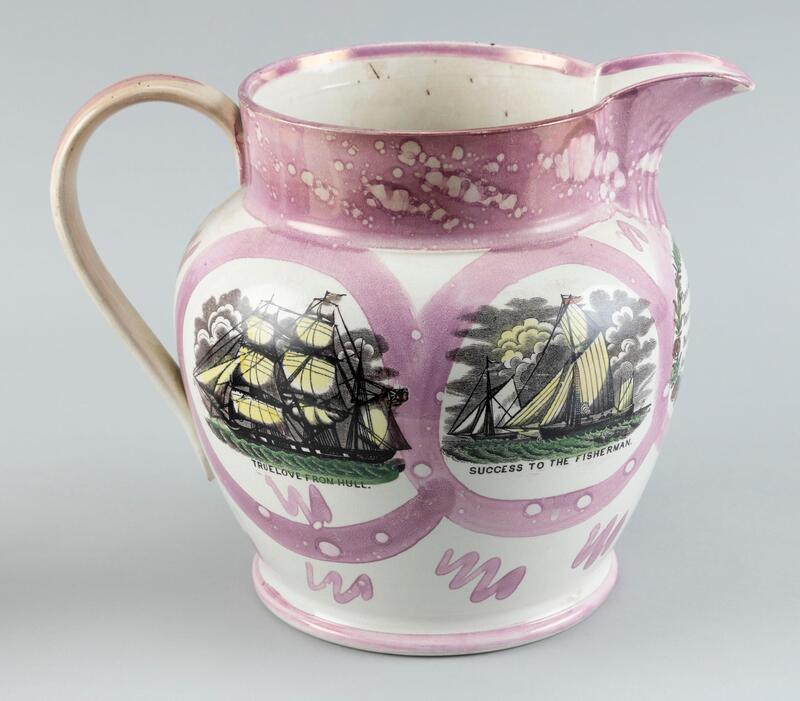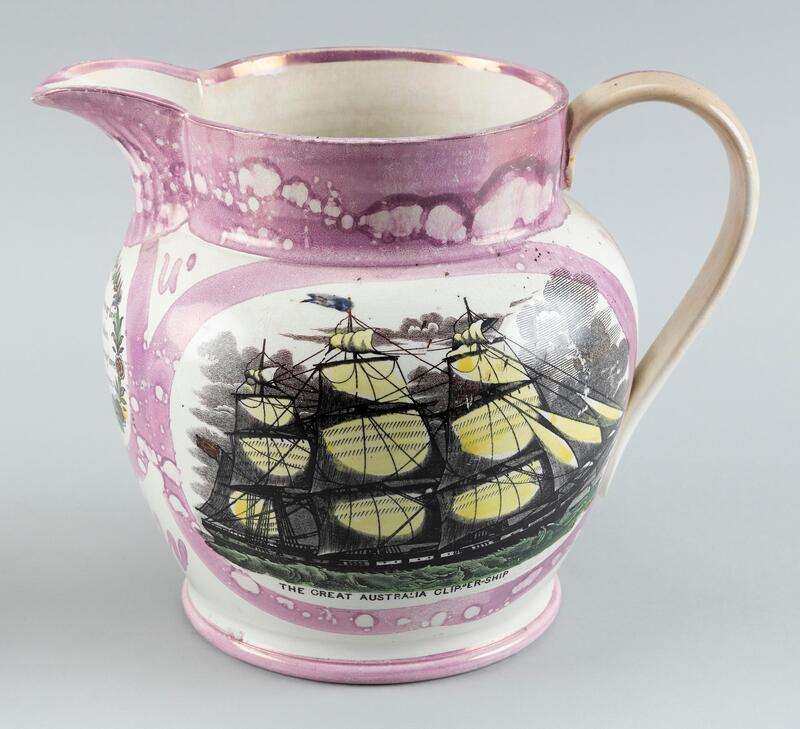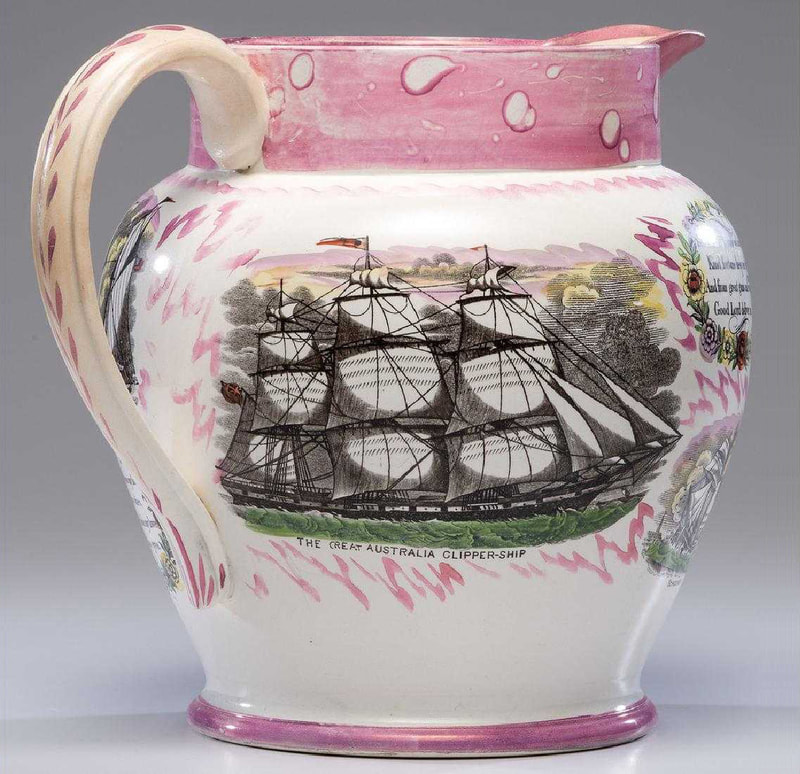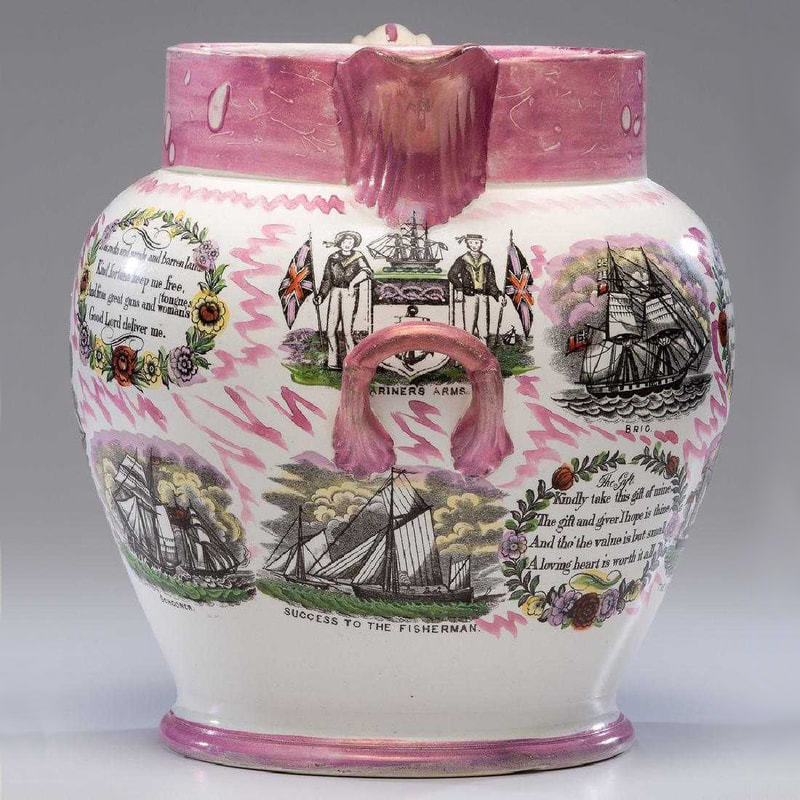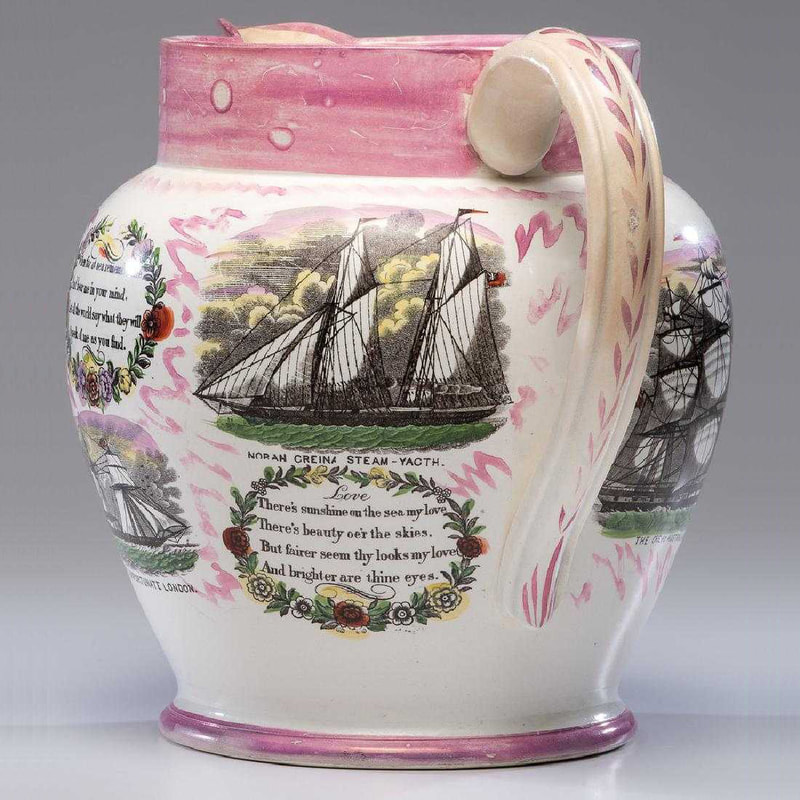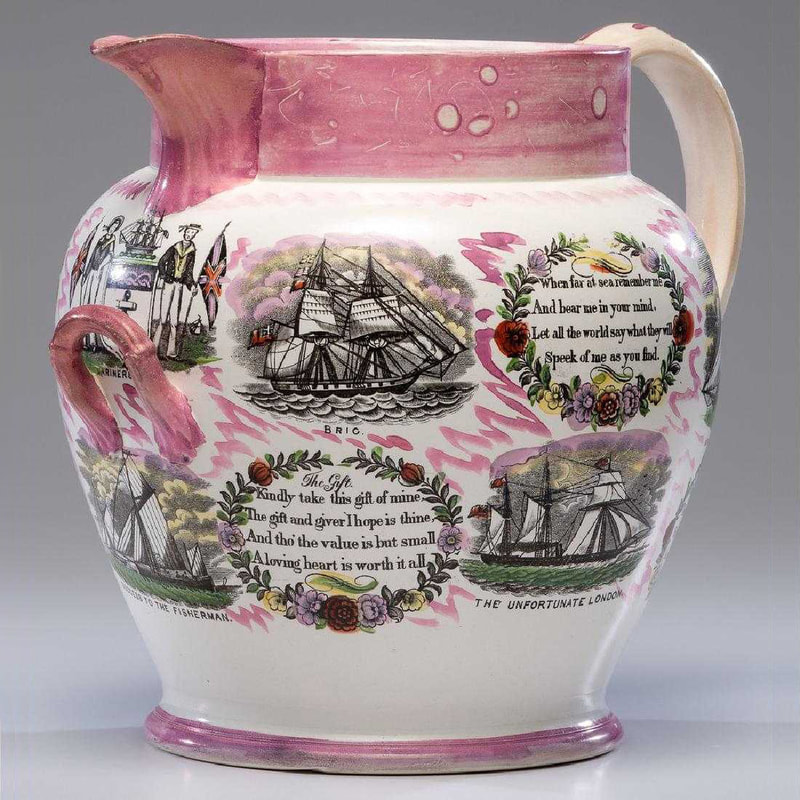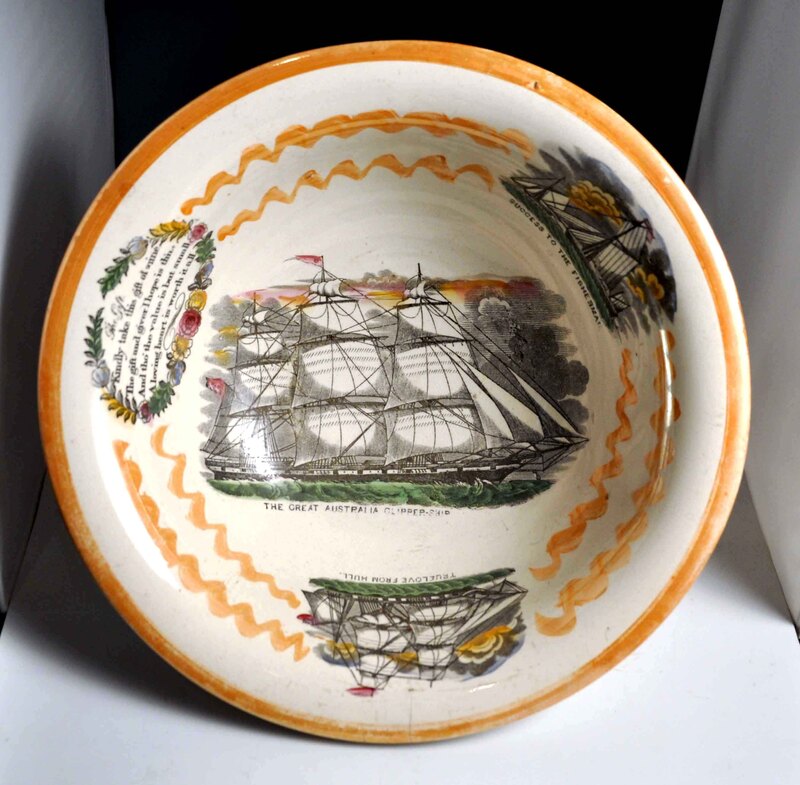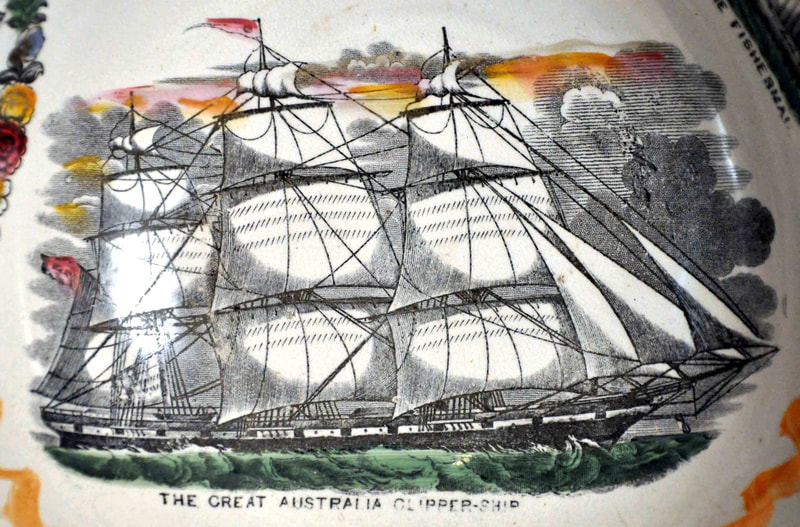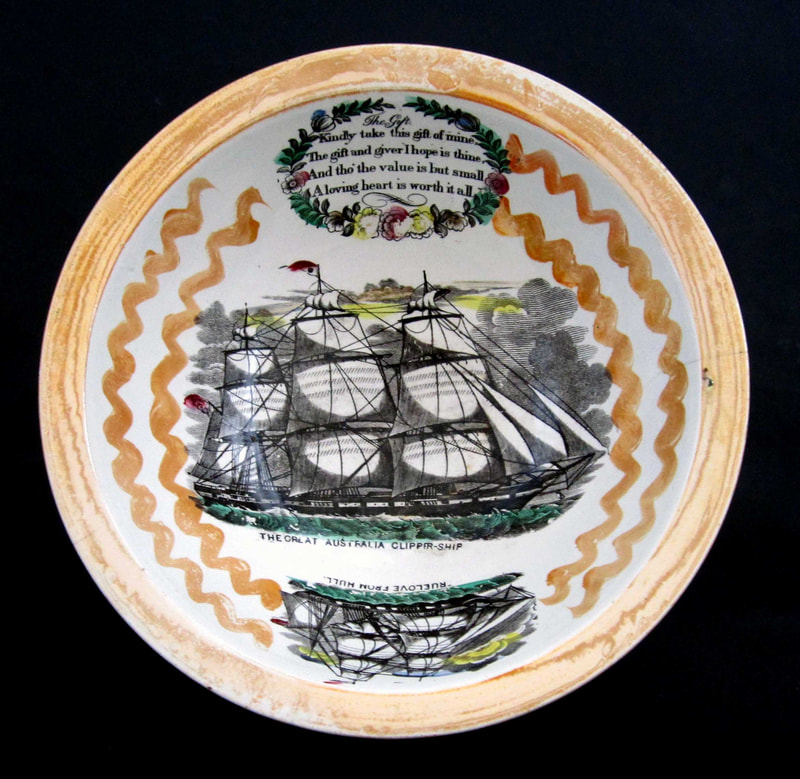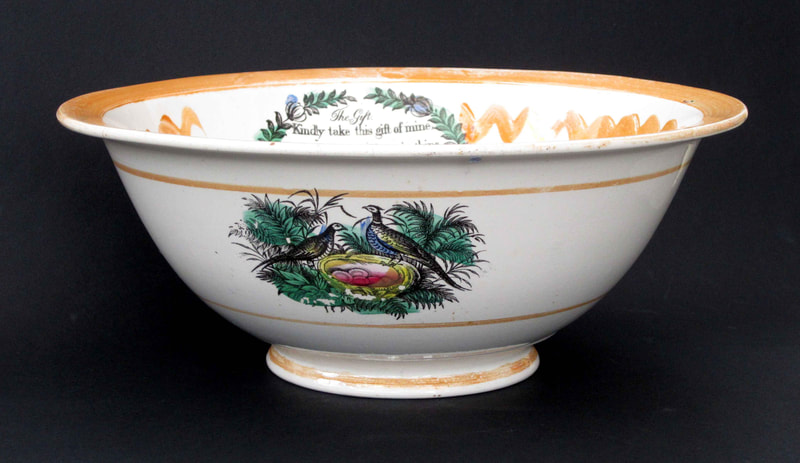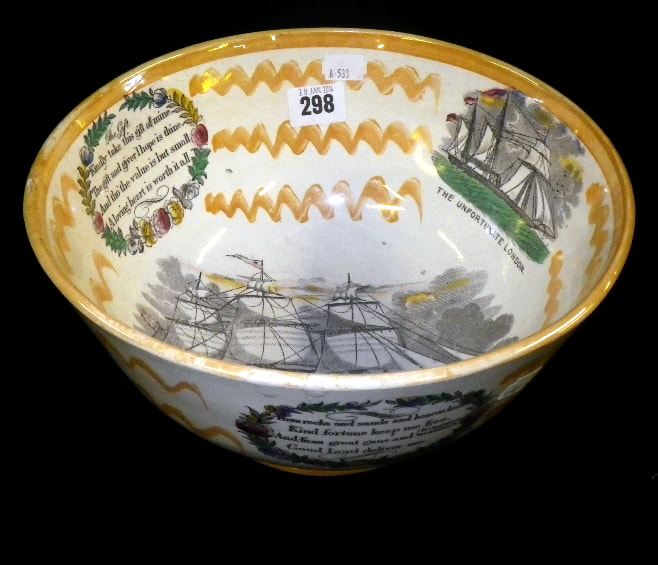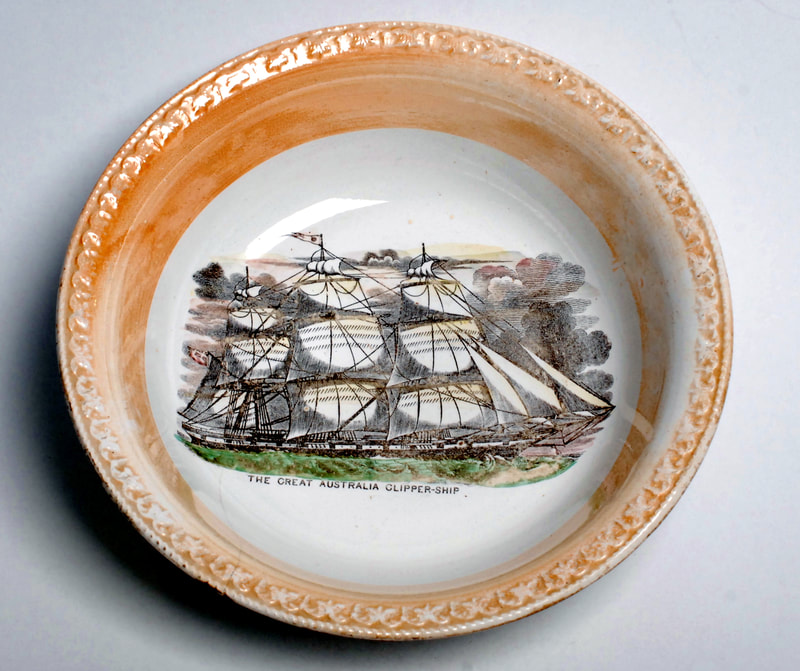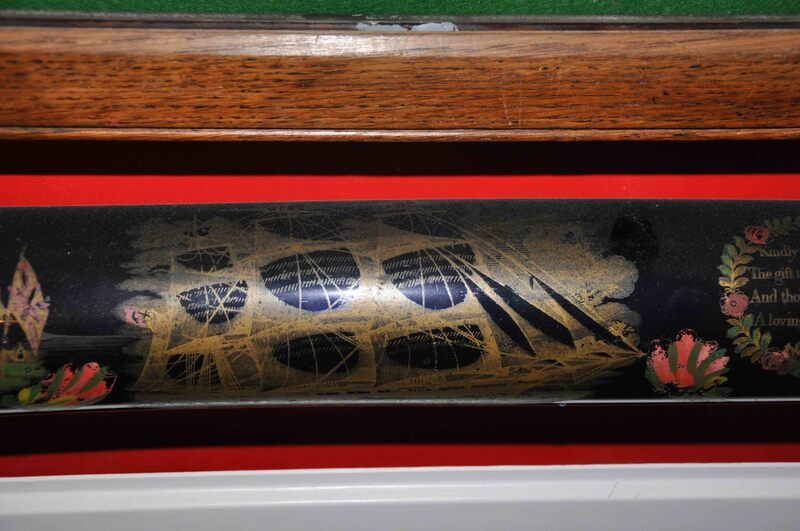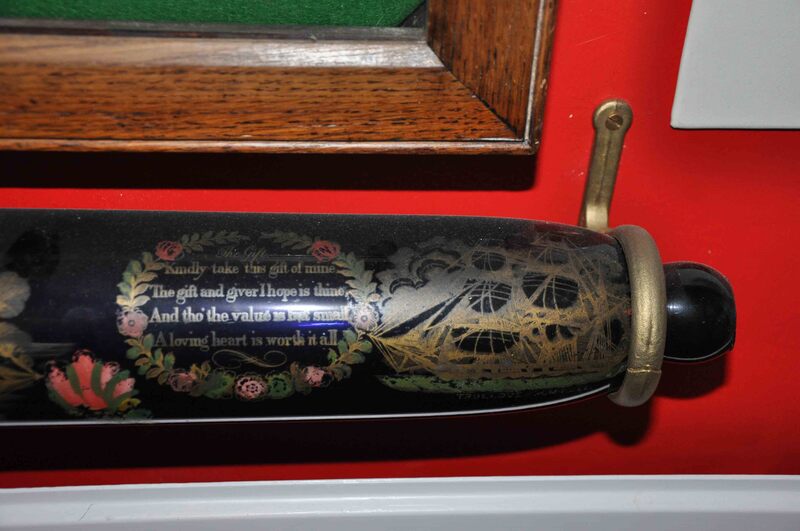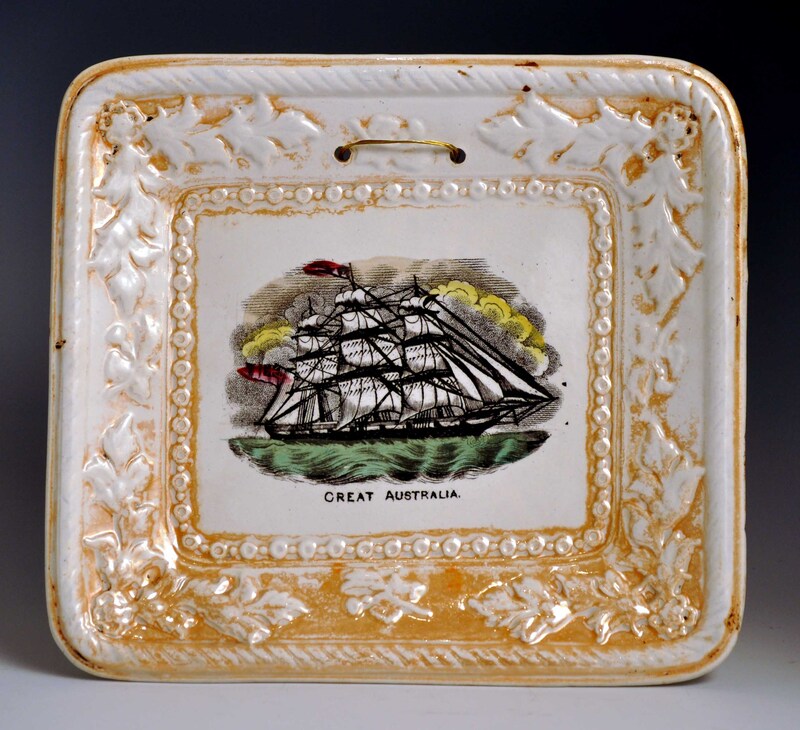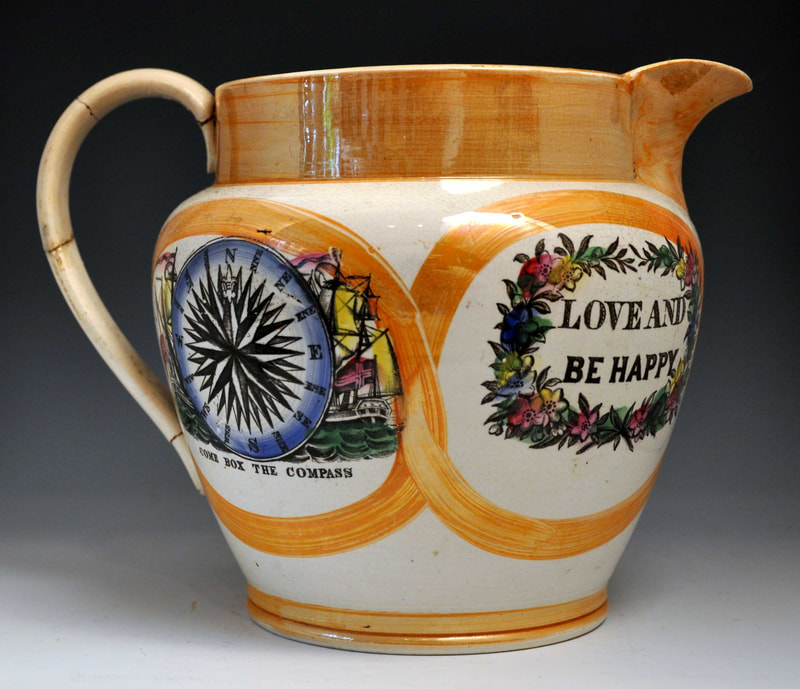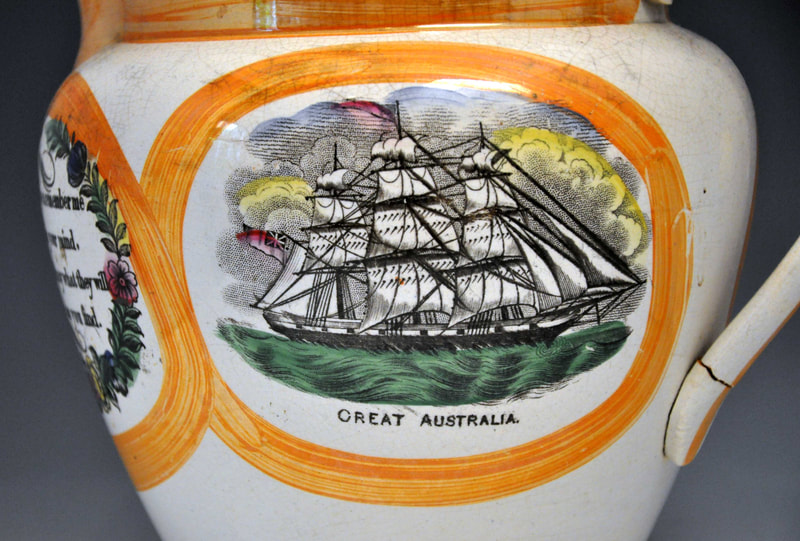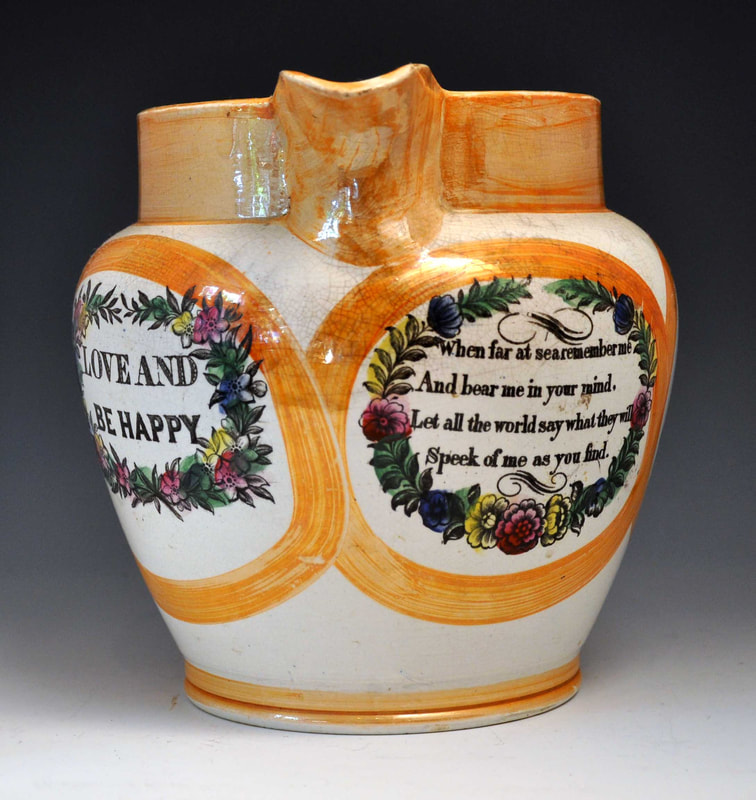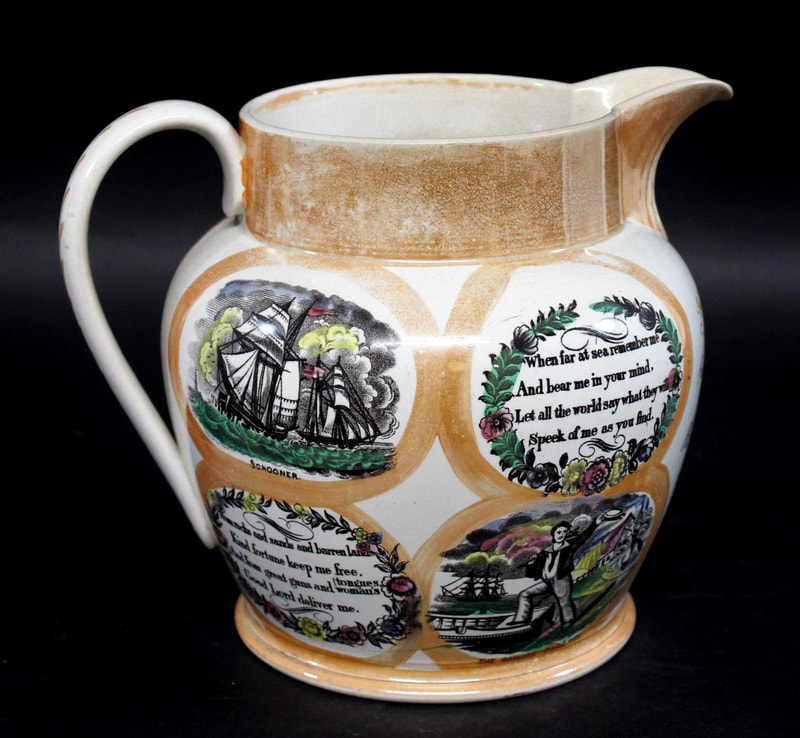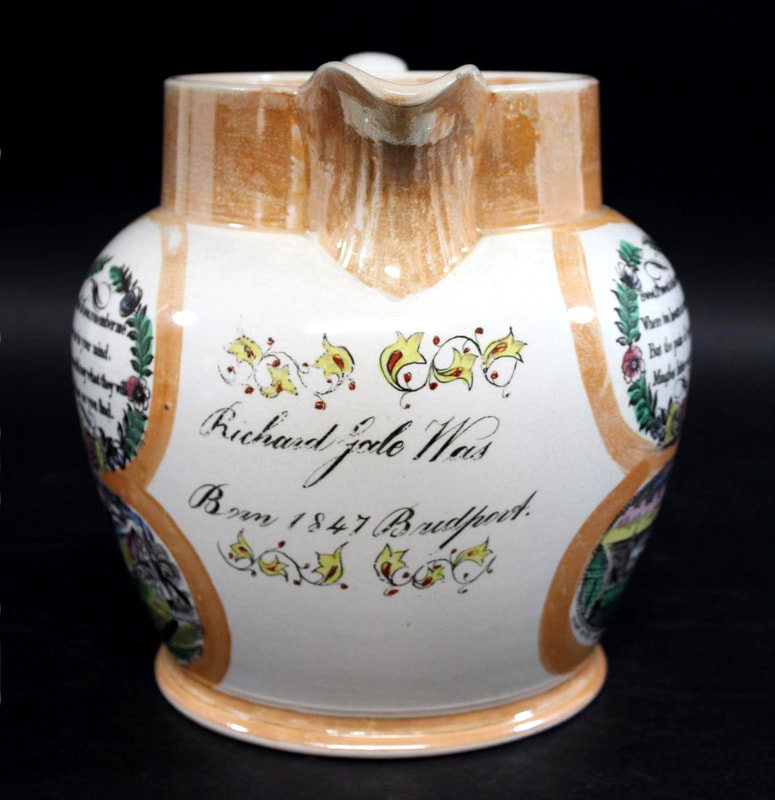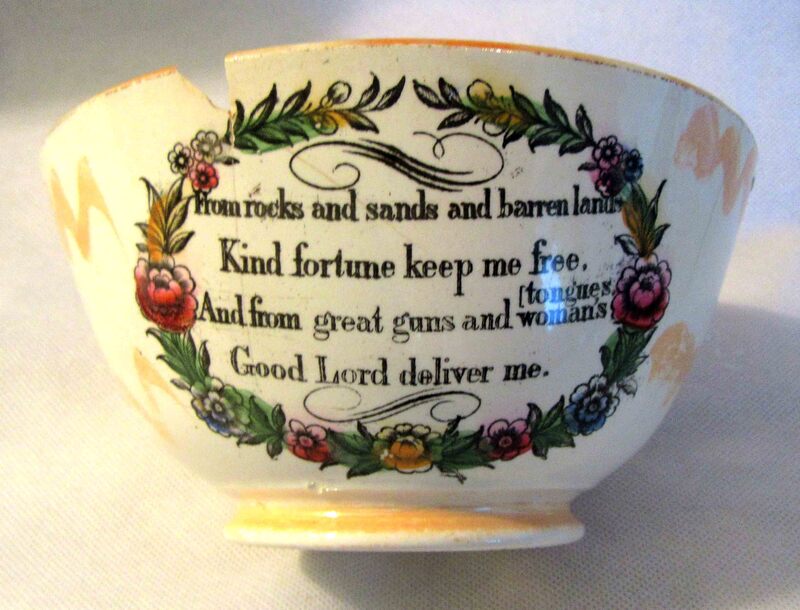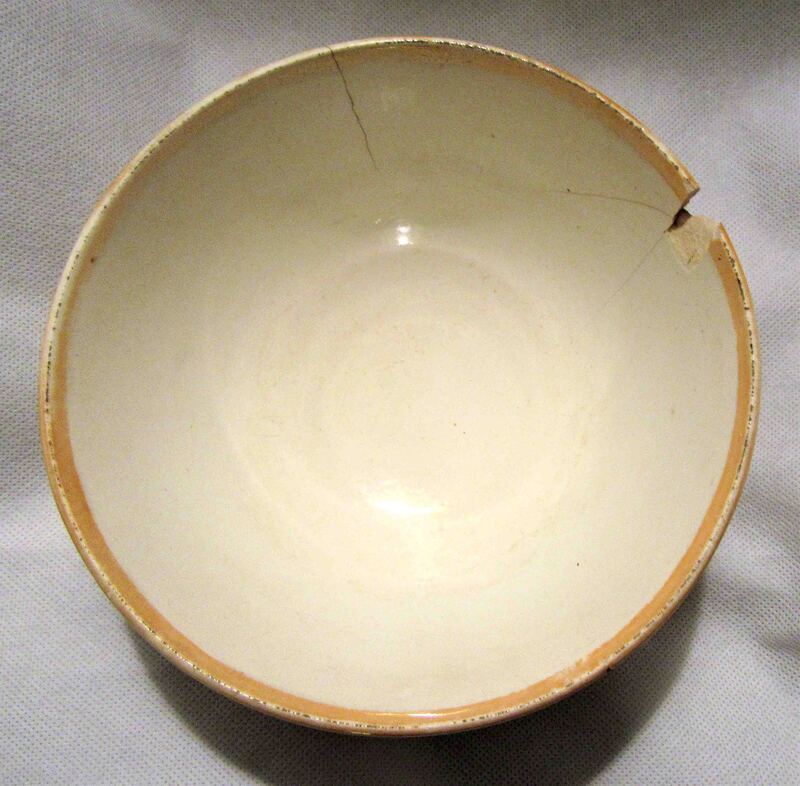The Great Australia Clipper-Ship – Sunderland
Like the Great Eastern Steamship, this transfer is much larger than average size, and appears on jugs and bowls. A smaller version (also shown on this page) was made for plaques.
The Gigantic clipper-ship "Great Australia," recently built for Messrs. Baines and Co., of Liverpool, Illustrated London News, December 1860.
Moore & Co's Wear Pottery and Scott's Southwick Pottery
The jugs with these ship transfers are always unmarked. The heavily lustred collars and zig-zag lustre decoration are, however, associated with Moore's pottery.
Below, a spectacular larger-sized jug with a handle at the front to aid pouring. This item has the whole gamut of the later ship transfers. It illustrates the difference in size of the Great Australia transfer.
An unmarked wash basin of a shape used by both Moore's and Scott's. The heavy pink-lustre decoration to the interior is typical of Moore's Wear Pottery.
Below, a similar orange lustre example with striped exterior. Orange lustre appears to have been introduced around the mid 1860s.
The bowl below is of similar shape and decoration to the one above, but has a partial SCOTT impress. It also has the Truelove and Gift transfers, but more unusually, it is decorated with pheasants around the outside. I have one recorded example of a pink lustre wash basin with the Scott impress, but the photo is too poor to include here.
The bowl to the right has the SCOTT impress. Baker writes, that 'Scott's supplied earthenware to Moore's Wear Pottery [...] presumably plain for decoration' (Baker page 54). Another possibility, by this late period, was that both potteries were sending items to neighbouring Sheepfolds Warehouse to be decorated. I have a large blue rolling pin with this transfer (see below), and Sheepfolds were known to have decorated such items.
Two large orange lustre jugs, which are, as always, unmarked. The first with very similar wavy lustre decoration to the left bowl above.
A composite image of the transfer printed in gold on a blue glass rolling pin. Norman Lowe, who has a similar pin with a transfer of the 'Star of Tasmania', has suggested that by the orange lustre period, the copper plates with these ship transfers had been moved to Sheepfolds Warehouse which, employing the principles of division of labour, decorated white earthenware items for both Moore's and Scott's. Sheepfolds were known to have had a side line in decorating rolling pins.
The Great Australia – Sunderland (smaller version)
Moore & Co's Wear Pottery and Scott's Southwick Pottery
This smaller version on the transfer, on a different copper plate to the one above, comes accompanied by a different set of transfers likely including the following:
Pictorial transfers Verses
Pictorial transfers Verses
- Forget Me Not
- From Rocks and Sands
- Love and Be Happy
- Loss of Gold
- Sweet Oh Sweet is That Sensation
- Sunderland Bridge
- When Far at Sea Remember Me
The left and centre plaque form below is associated with Moore's, and the right with Scott's. If you have 'Love and Be Happy' on a plaque, please get in touch. There must be one out there somewhere.
Although dated 1847, the orange lustre suggests this jug was made c1870. NB it has a transfer of the New Sunderland Bridge, which didn't open until 1859. The ship, the Great Australia, also features on this jug. It was launched in 1860.
The transfer on an unmarked bowl, with the first word of the title clipped to 'Grea Australia' as the transfer was applied over a curved surface.
Finally, a milk glass and blue glass rolling pin with the smaller transfer, perhaps decorated by Sheepfolds Warehouse (see above).


